September 19, 2023 Auroras
Mount Itasca
A coronal mass ejection (CME) moved past Earth in the evening, so I went out to photograph auroras. As is usually the case, I had to stop by Mount Itasca to run an errand, so I decided to shoot the auroras from there. The jump would make a good location from which to shoot, and I also decided to do some shots from the main ski hill. The main band of auroras were out as I did some work inside the chalet. I checked a couple times, but there was no substorm.
After I finished my work, I took my camera with me and climbed the hill. I composed some shots on the main run and at the top of the chairlift while the auroral oval expanded. I walked onward and reached the 70-meter jump. I climbed to the top and decided it would be a good idea to switch to my wider angle lens (16-35mm). To my disappointment, I found that it had not been in the camera backpack that I so hastily grabbed on my way out. I never took the time to make sure the lenses I wanted were in the pack. I would have to shoot with just the 24mm lens.
I shot a time lapse while a substorm slowly developed. After a few minutes of storming, the auroras expanded directly overhead and started pulsing like lightning. The display was spectacular with a weak corona overhead, but I decided to leave the time lapse camera shooting where it was. The auroras filled the frame of the shots and then gradually began fading. Since it was weeknight, and I needed to be at work in the morning, I decided to pack up and go home after this first substorm.
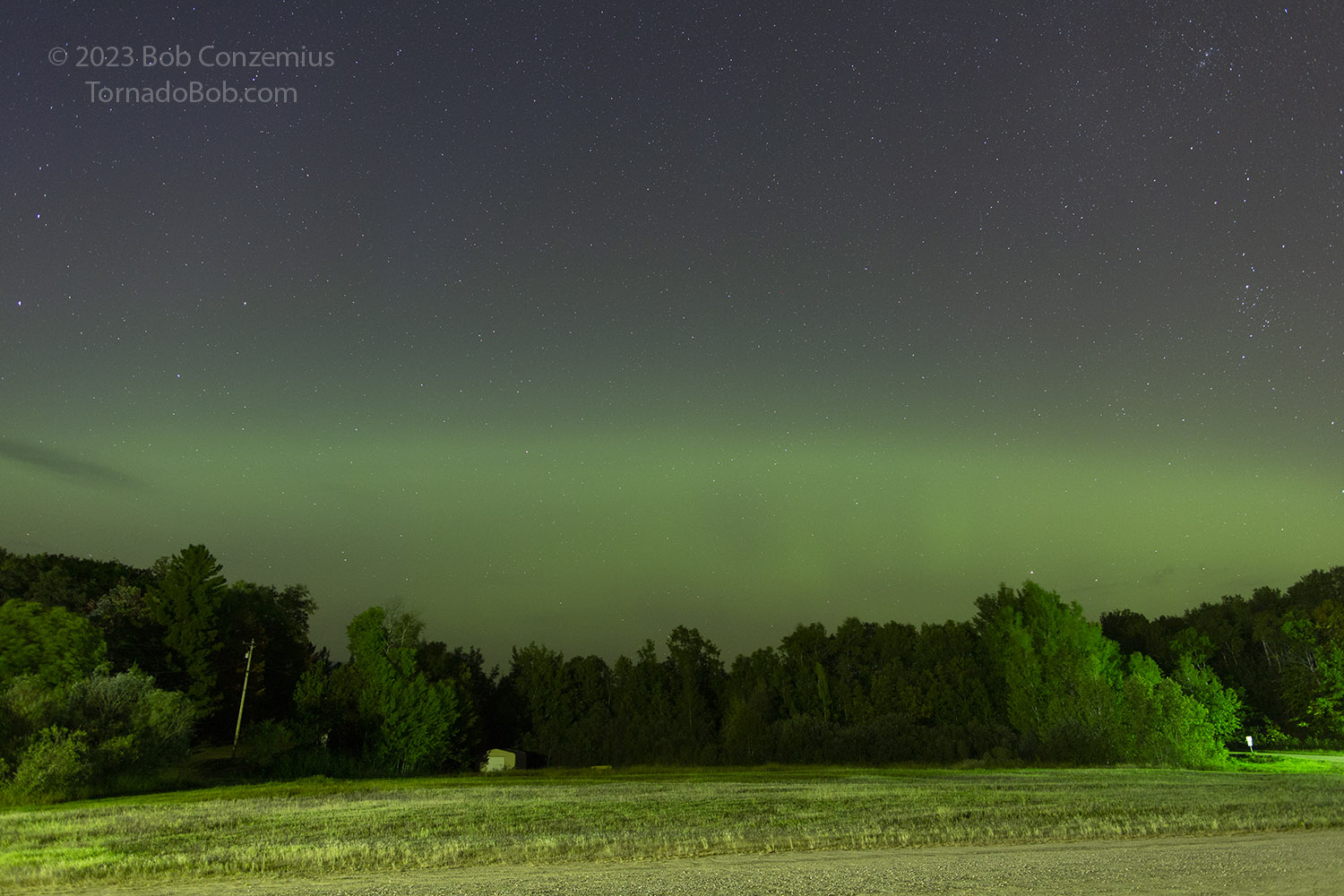 |
| An auroral arc looking north from the front door of the chalet. |
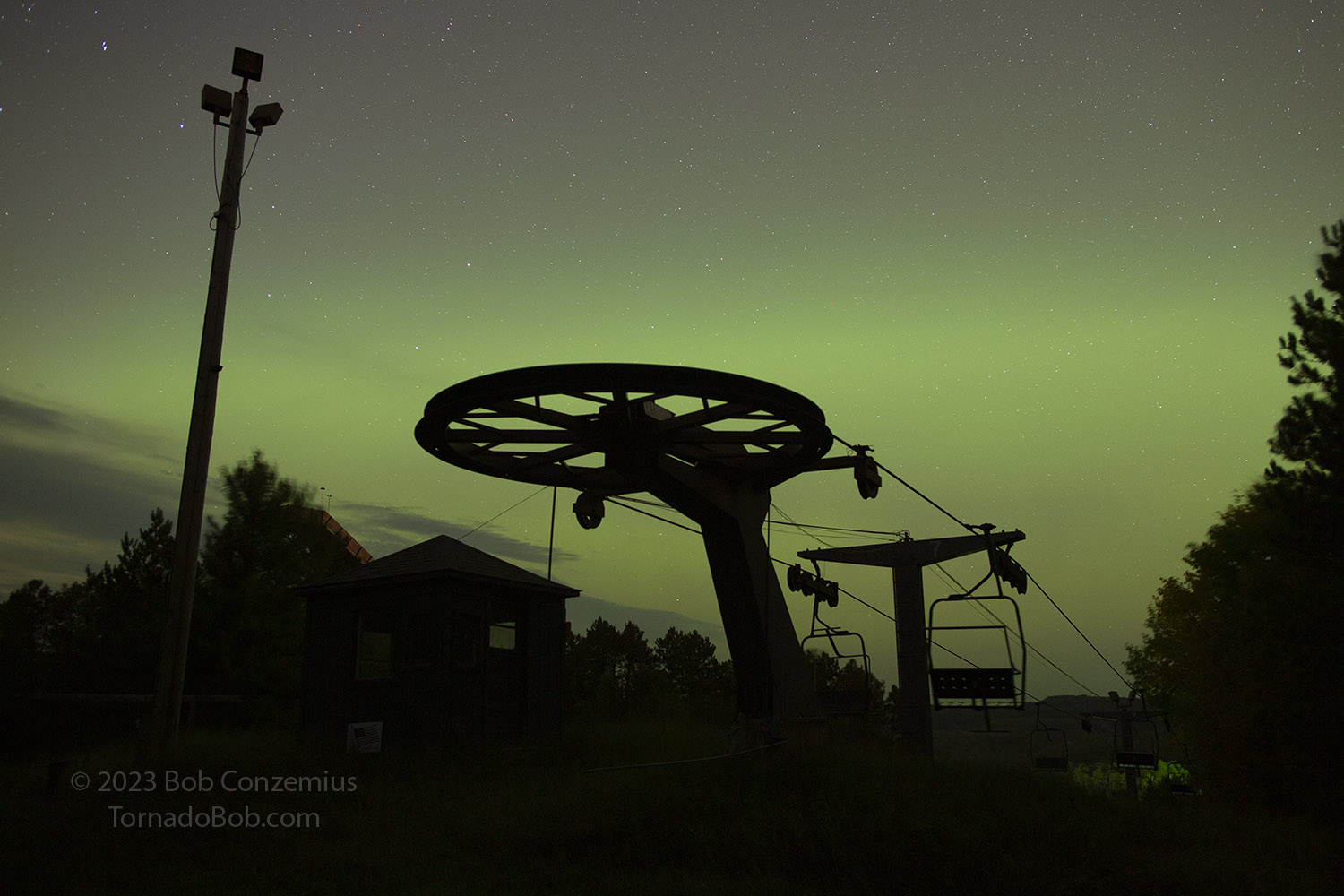 |
| The top of the chairlift silhouetted against the auroras. |
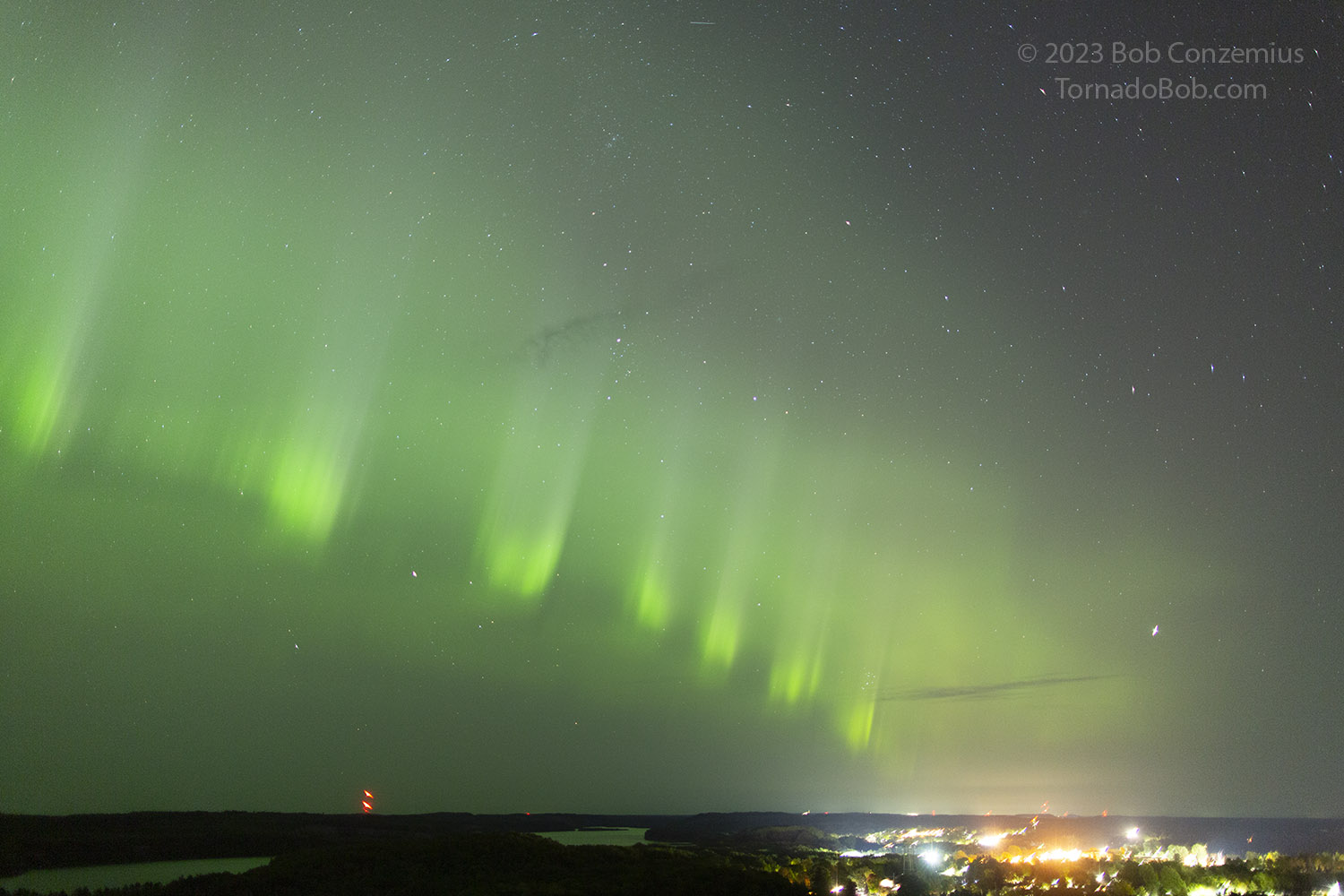 |
| The beginning of a slow substorm viewed from the top of the 70-meter jump. |
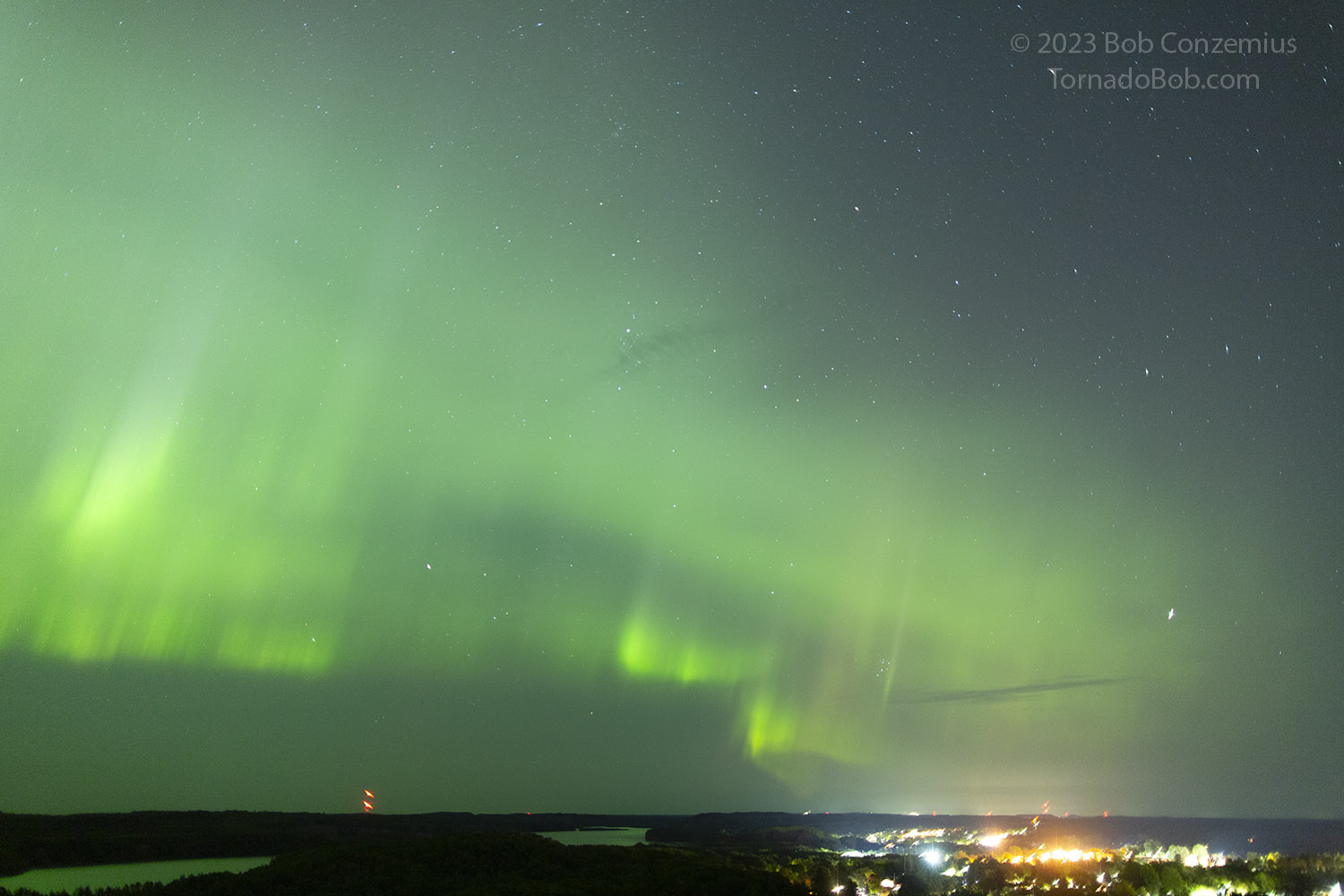 |
| The auroras expand to cover more of the sky. |
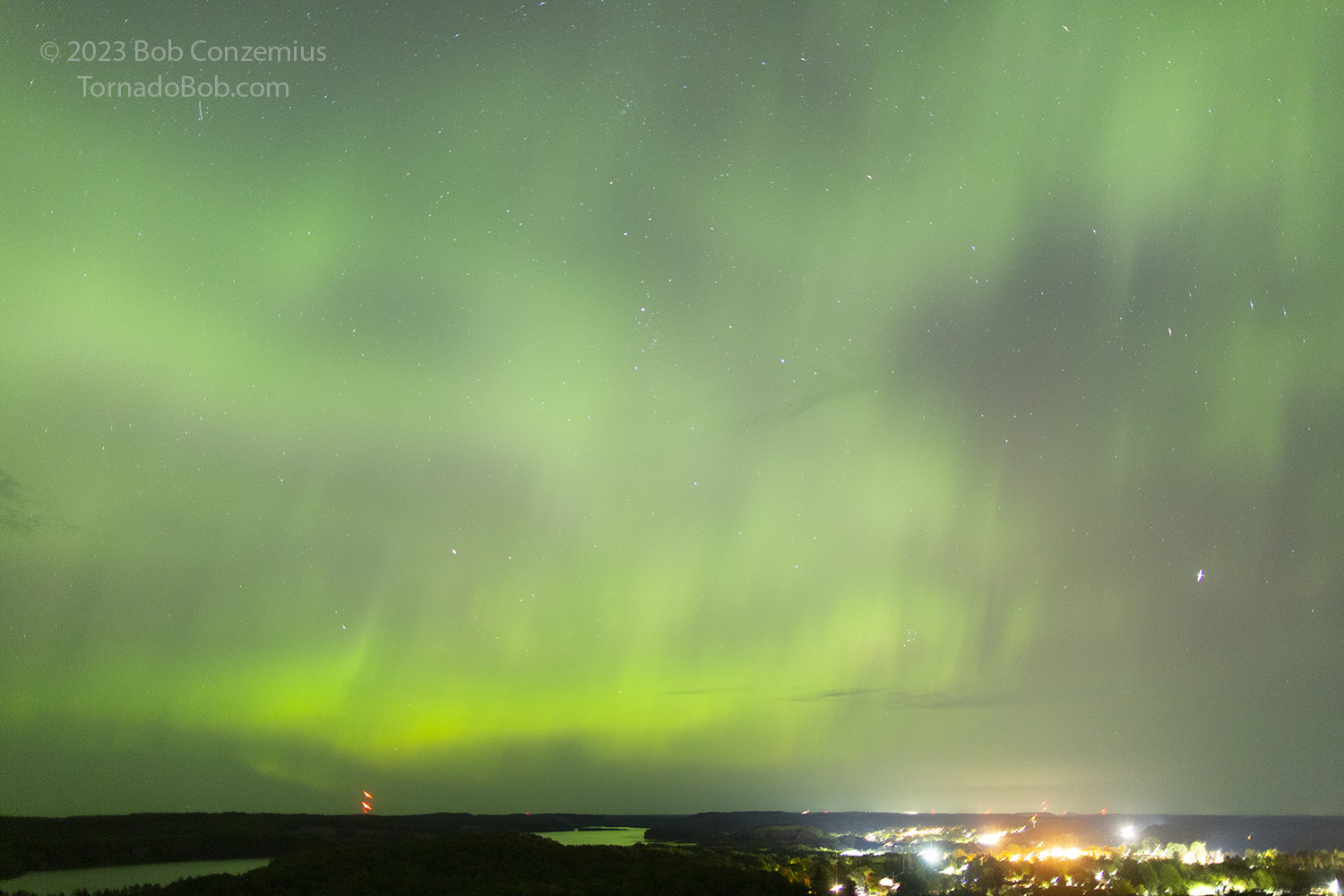 |
| The auroras fill the northern half of the sky, and I am looking at fast flashes of aurora overhead. |
Back to Auroras | Home




